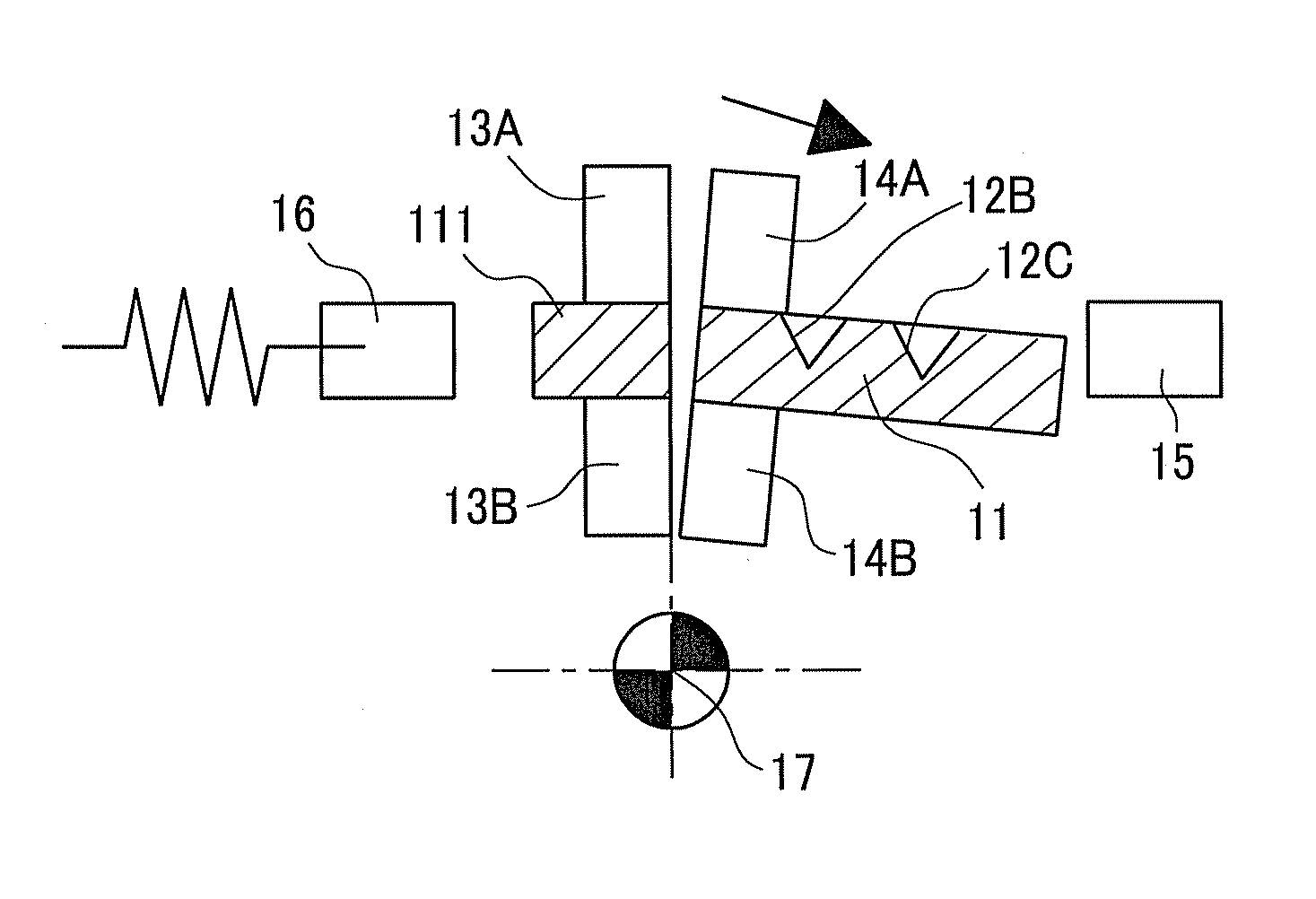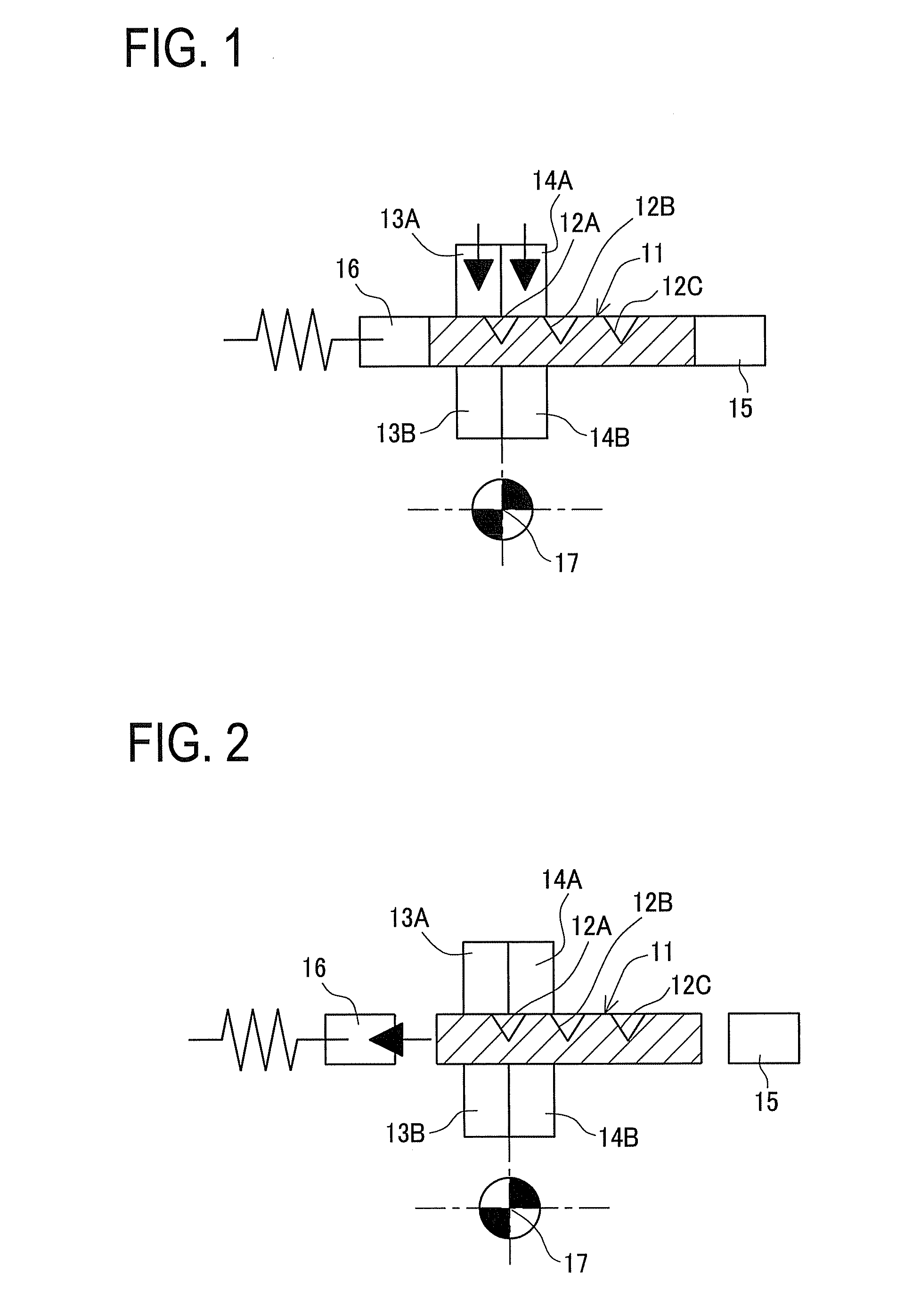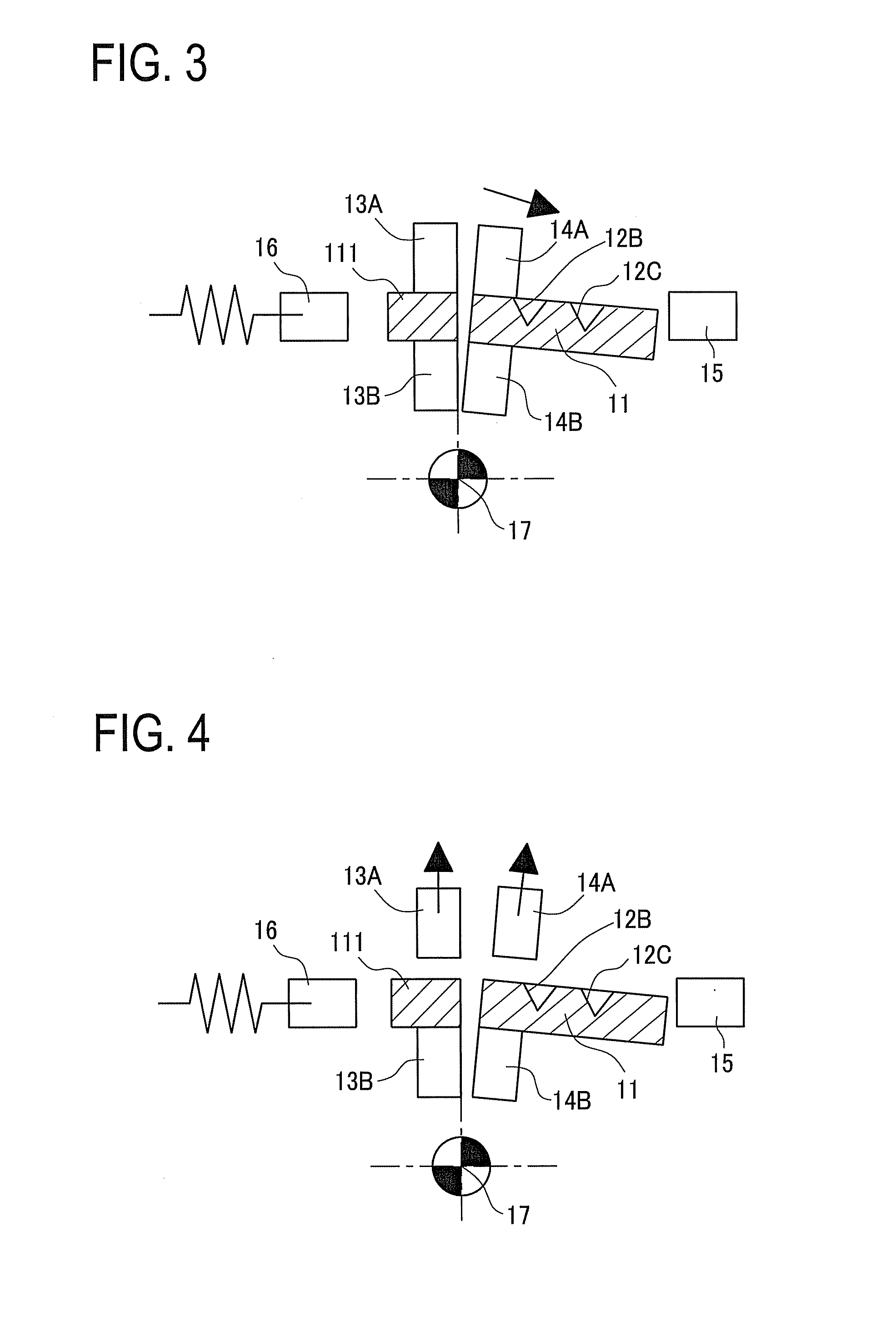Cleavage method, rotor manufacturing method, and cleavage apparatus
a technology of rotor manufacturing and cleavage method, which is applied in the manufacture of stator/rotor bodies, metal working apparatuses, and solid insulation. it can solve the problems of long work time, long work time, and cost increase, and achieve the effect of preventing depression or caving in the surface, shortening the unit time, and cost reduction
- Summary
- Abstract
- Description
- Claims
- Application Information
AI Technical Summary
Benefits of technology
Problems solved by technology
Method used
Image
Examples
Embodiment Construction
[0039]A detailed description of a preferred embodiment of a plate-shaped workpiece cleavage method embodying the present invention will now be given referring to the accompanying drawings. FIG. 12 is a front view of a plate-shaped workpiece cleavage apparatus and FIG. 11 is a diagram seen from an arrow A in FIG. 12.
[0040]The cleavage apparatus is configured so that a pair of central walls 21 are provided standing at a center and a rotary support shaft 22 is fixed to the central walls 21. The rotary support shaft 22 holds a fixing-clamp link 23 and a rotating-clamp link 33 as shown in FIG. 11 so that the links 23 and 33 are separately rotatable. As shown in FIG. 12, at a left end of the fixing-clamp link 23, a support shaft 25 rotatably supports a cam follower 24. At a left end of the rotating-clamp link 33, even though not appearing in the figure, at a left end of the rotating-clamp link 33, a support shaft 35 rotatably supports a cam follower 34.
[0041]On the other hand, a motor bra...
PUM
| Property | Measurement | Unit |
|---|---|---|
| thickness | aaaaa | aaaaa |
| length | aaaaa | aaaaa |
| width | aaaaa | aaaaa |
Abstract
Description
Claims
Application Information
 Login to View More
Login to View More - R&D
- Intellectual Property
- Life Sciences
- Materials
- Tech Scout
- Unparalleled Data Quality
- Higher Quality Content
- 60% Fewer Hallucinations
Browse by: Latest US Patents, China's latest patents, Technical Efficacy Thesaurus, Application Domain, Technology Topic, Popular Technical Reports.
© 2025 PatSnap. All rights reserved.Legal|Privacy policy|Modern Slavery Act Transparency Statement|Sitemap|About US| Contact US: help@patsnap.com



